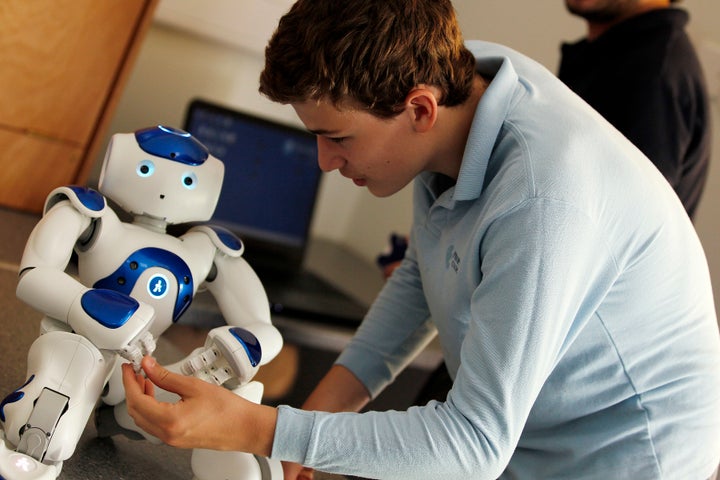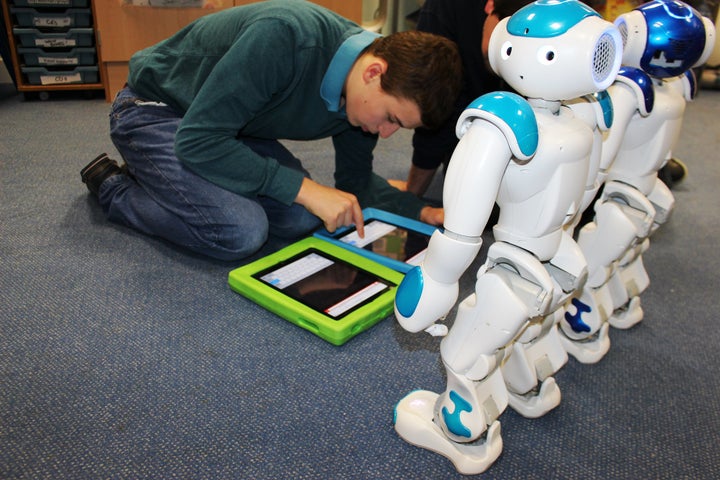Jamie Lawrence’s eyes light up when an interactive robot is placed in front of him. He engages with it, calls it his “friend” and beams when the robot raises its arms to let him know he has answered its question correctly.
Jamie, 14, who has autism, is engaging with Steve the Robot, a digital assistant that supports children with special needs to help them develop their social skills. The robot has no facial expressions to read, nor does the tone of its voice vary, making it easier for children with autism to interact.
“Many of our young people have difficulty relating to others because of their autism, this means that looking at an adult and taking onboard instructions can be difficult,” says Sue Piper, director of education at Prior’s Court in Thatcham, Berkshire, where Jamie goes to school.

Children and young people, aged five to 25, who are severely affected by autism and have moderate learning difficulties, are taught at Prior’s Court. Some students are non-verbal, pre-verbal or have limited language.
Each class will use the robot a few times each week for sessions lasting up to 20 minutes. A typical session might start with hello, choosing a song for the robot to sing, a learning activity, then goodbye.
“The children are comfortable interacting with the robot, developing eye contact, and responding to instructions so it can be used to help build their social skills and facilitate learning,” explained Piper. “It promotes the social aspects of sitting in a group, waiting, choosing, interacting and communication.
“It’s very useful as a teaching tool for things like learning animals, colours and counting, as it’s a great motivator. Some children even sing, dance and sign along to songs with the robot.
“In groups, it’s also an excellent way of helping to teach about taking turns. The robot becomes the focal point, but a teacher is needed to facilitate and support the work.”

Steve the Robot is made by Emotion Robotics, a tech company providing products for education, businesses and developers. They launched the ‘Assist for Autism and Special Needs’ programmed robots in November 2017, with the aim of providing teachers with a simple-to-use robot, preprogrammed with activities to help children with autism develop concentration, language and socialisation by positively stimulating students through the robot’s feedback.
Teacher Nuno Guerreiro frequently uses the robots in classes and has seen firsthand how beneficial they’ve been. “The students, they love the robots,” he says. “They love the robot moving, talking, dancing, singing.
Prior’s Court has had the robot for nearly two years now. Piper explains that the school’s founding patron Dame Stephanie Shirley “saw potential for this type of assistive technology in supporting people with autism”, as she is a pioneer in the world of information technology with a strong interest in autism which affected her late son Giles.
The school currently has one robot, but the team from Emotion Robotics visited with a second one that interacts with Steve and so Prior’s Court is now fundraising for a second robot with some additional software made specifically for children severely affected by autism and learning difficulties.

